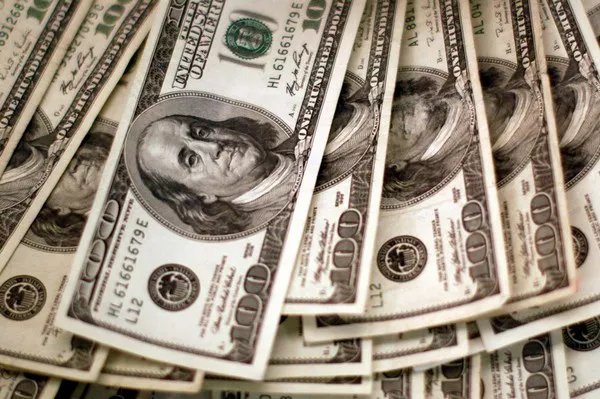In the world of currency, the United States has a rich history of issuing various denominations, ranging from the one-dollar bill to the elusive $100,000 bill. However, one denomination that has mysteriously vanished from everyday circulation is the $1,000 bill. While many of us may be familiar with the $100 bill or even the $50 bill, the $1,000 bill remains largely forgotten. In this article, we will explore the fascinating history of the $1,000 bill and uncover the reasons behind its discontinuation.
The Birth of High-Denomination Currency
The United States has a long history of issuing high-denomination banknotes. The practice of issuing currency notes in large denominations can be traced back to the mid-19th century. These high-value notes were primarily used for large transactions between financial institutions and were often referred to as “big bills.” They played a crucial role in the functioning of the financial system during those times, facilitating the movement of vast sums of money.
The $1,000 bill made its first appearance in 1861 when the federal government introduced it as a Legal Tender Note. Over the years, various series and designs of the $1,000 bill were produced, featuring notable figures such as Alexander Hamilton and Grover Cleveland. These notes were not intended for everyday transactions but rather for use in the banking and financial sector.
The Use and Disuse
The primary purpose of the $1,000 bill was to streamline large financial transactions between banks and other financial institutions. The notes were used to settle accounts and transfer significant sums of money securely. They were an essential component of the financial infrastructure during a time when electronic transfers and modern banking systems were not as prevalent as they are today.
Additionally, the $1,000 bill served another vital role during its existence. It acted as a reserve currency, helping banks maintain liquidity and facilitating the redemption of smaller denomination notes. By holding a supply of high-denomination notes, banks could ensure that they had enough cash to meet the demands of their customers, as well as other financial institutions.
In the early 20th century, the $1,000 bill underwent a redesign, featuring portraits of notable Americans, including Alexander Hamilton, the first Secretary of the Treasury, and Grover Cleveland, the 22nd and 24th President of the United States. These bills were an integral part of the U.S. monetary system during their time, but their use began to wane as technology and banking practices evolved.
The Discontinuation of High-Denomination Bills
The gradual discontinuation of high-denomination bills, including the $1,000 bill, can be attributed to several factors. One of the primary reasons was the increasing prevalence of electronic banking and wire transfers. As technology advanced, the need for physical cash to facilitate large transactions decreased significantly. Instead of relying on paper currency, banks began using electronic means to transfer funds quickly and securely.
The government also took measures to curb illicit activities such as money laundering and tax evasion, which were often associated with the use of high-denomination bills. Reducing the circulation of these large bills was seen as a way to combat these activities. The U.S. government’s efforts to combat money laundering and tax evasion culminated in the passage of the Bank Secrecy Act in 1970, which required financial institutions to report large cash transactions.
The Introduction of the $500 Bill
As the use of high-denomination bills declined, the Federal Reserve ceased printing new $1,000 bills in 1945. However, this did not mark the end of large denomination currency in the United States. The $500 bill, featuring President William McKinley, continued to be printed until 1945 and was more commonly seen in circulation. In fact, it remained in circulation until 1945.
One intriguing note in this context is the existence of the $100,000 bill, which featured Woodrow Wilson and was primarily intended for transactions between Federal Reserve Banks. Although it was never circulated publicly and was used exclusively within the Federal Reserve System, it is the highest denomination ever issued in the United States.
Demystifying the $1,000 Bill
Given its relatively rare appearance in everyday life, the $1,000 bill has garnered a sense of mystique. While they have been removed from general circulation, these notes are not entirely extinct. Some collectors and enthusiasts prize them for their historical significance and rarity.
Collectors often pay a premium for $1,000 bills, as their scarcity and historical value make them desirable additions to numismatic collections. The value of a $1,000 bill can vary greatly depending on factors such as its condition, rarity, and historical significance. Some well-preserved examples can command significant prices in the collector’s market.
Conclusion
The disappearance of the $1,000 bill from everyday use is a result of changing financial practices and the evolving nature of the U.S. banking system. While the high-denomination bill had a crucial role in facilitating large transactions and maintaining liquidity in the past, advancements in electronic banking and efforts to combat money laundering led to its discontinuation.
The $1,000 bill remains a symbol of a bygone era when large sums of money were moved in physical cash. Today, it holds a unique place in the world of numismatics, where collectors treasure it for its historical value and scarcity. Although we may never see a $1,000 bill in our wallets or daily transactions, its legacy lives on as a fascinating piece of American currency history.


